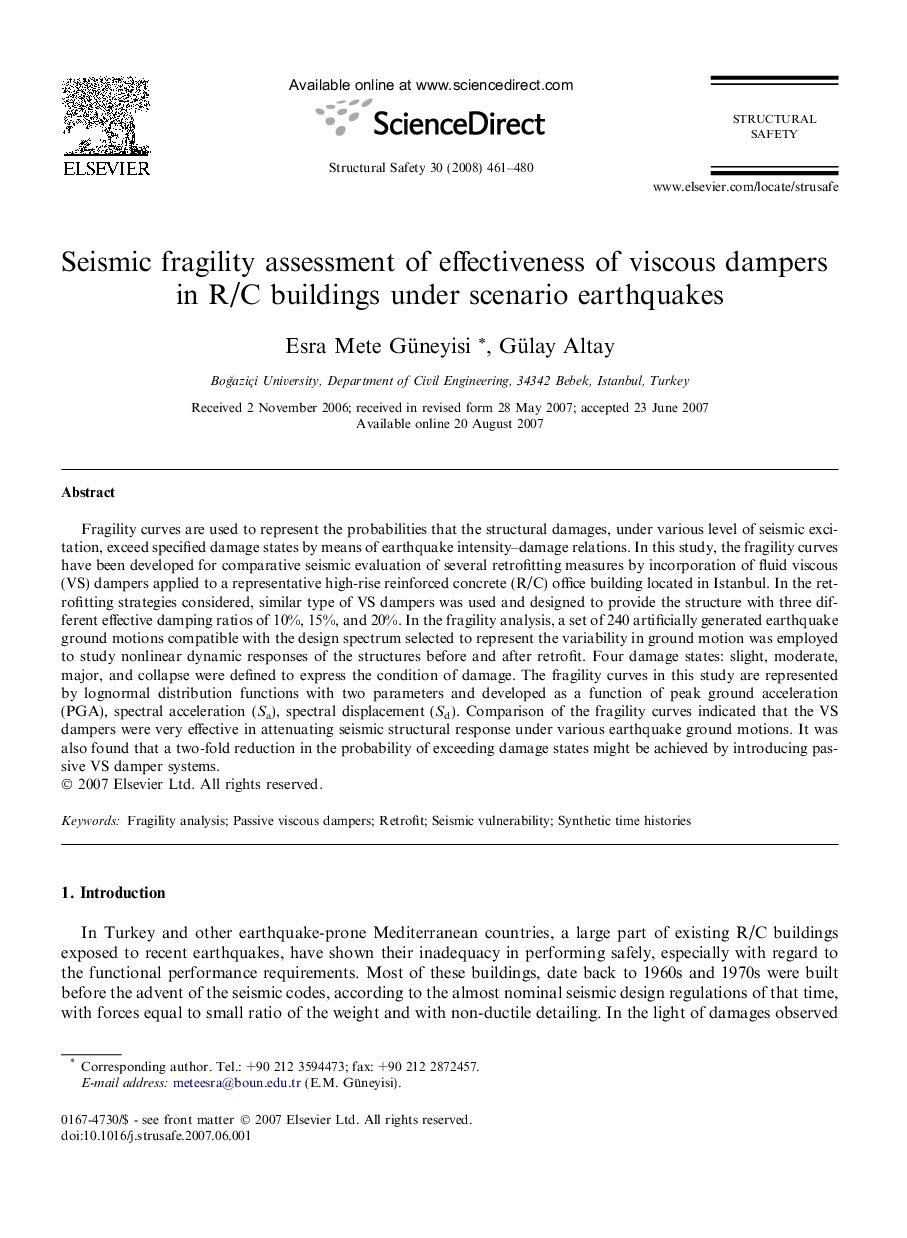| Article ID | Journal | Published Year | Pages | File Type |
|---|---|---|---|---|
| 307877 | Structural Safety | 2008 | 20 Pages |
Fragility curves are used to represent the probabilities that the structural damages, under various level of seismic excitation, exceed specified damage states by means of earthquake intensity–damage relations. In this study, the fragility curves have been developed for comparative seismic evaluation of several retrofitting measures by incorporation of fluid viscous (VS) dampers applied to a representative high-rise reinforced concrete (R/C) office building located in Istanbul. In the retrofitting strategies considered, similar type of VS dampers was used and designed to provide the structure with three different effective damping ratios of 10%, 15%, and 20%. In the fragility analysis, a set of 240 artificially generated earthquake ground motions compatible with the design spectrum selected to represent the variability in ground motion was employed to study nonlinear dynamic responses of the structures before and after retrofit. Four damage states: slight, moderate, major, and collapse were defined to express the condition of damage. The fragility curves in this study are represented by lognormal distribution functions with two parameters and developed as a function of peak ground acceleration (PGA), spectral acceleration (Sa), spectral displacement (Sd). Comparison of the fragility curves indicated that the VS dampers were very effective in attenuating seismic structural response under various earthquake ground motions. It was also found that a two-fold reduction in the probability of exceeding damage states might be achieved by introducing passive VS damper systems.
